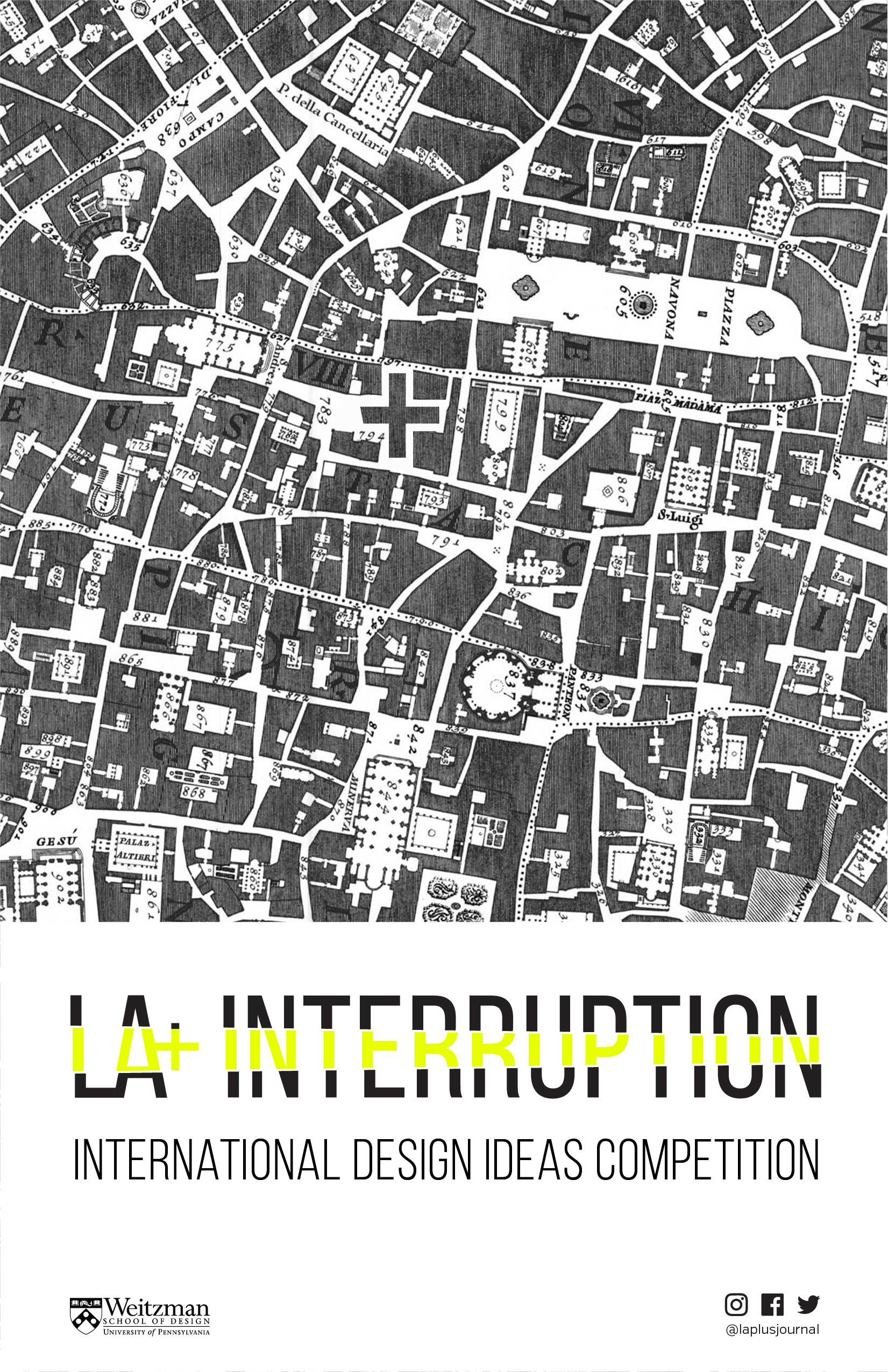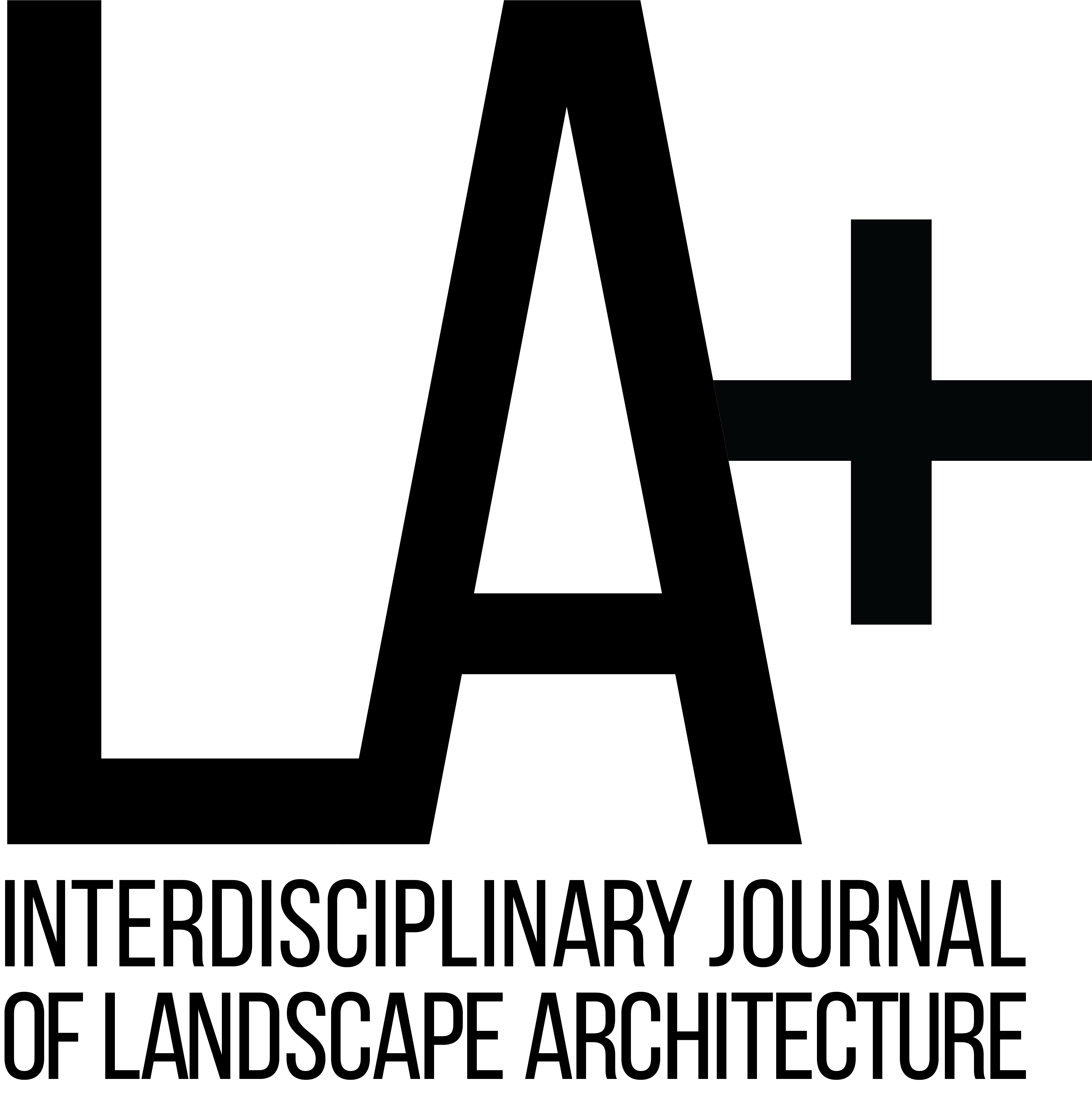
BRIEF
In 1979 in
Rome an event titled Roma Interrota was held by the Italian Incontri
Internazionale d’arte. It assembled 12 renowned architects, with each
assigned a panel from Giambattista Nolli’s 1736 plan of Rome and invited to
“interrupt” the plan with their own architectural intervention. The event is a
landmark with regard to issues of contextualism; that is, questions of how, in
the wake of modernism, the new fits in with the old or, as the case may be,
doesn’t.
Some five
decades later it is safe to say that urban designers pay much more attention to
context than they generally did prior to 1979. Indeed, the raison d’etre of landscape architecture since then has been to fit in with and enhance the
existing ecology and culture of a place – to consolidate “a sense of place.”
But fitting in and consolidating the status quo can not only be boring but
profoundly wrong for today’s world. Why should we fit in with a world speeding
headlong into a climate emergency, one that is increasingly shaped by false
information and one increasing characterized by social inequity? Perhaps what
we really need now are things that don’t fit, things that interrupt and disrupt
so as to more boldly change hearts and minds, and redirect ecological and
socio-economic flows.
Instead of
just a stage for 12 famous white male architects, LA+ is creating a platform
for anyone to take an established city or place and design their own INTERRUPTION within it. You can site
your interruption anywhere and, if necessary, remove anything to make way for
it. It can be an artwork, a garden, a building, a space, a thing, a barrier, an
ambience, an opening, a catalyst, a performance, a program, an institution, an
intervention, a folly... It can be any scale and it can be anywhere. Whatever and wherever it is, it must productively interrupt both its cultural and spatial context. What does this mean? It means injecting something different into a given context to effect new meanings and new functions. It means questioning what design does, who it’s designed for, what it looks like, and what it means.
All you need
to do to enter your design is provide a plan, a concept image, and supporting imagery along with a short
statement explaining the what, why, where, how, and benefit/s of your
INTERRUPTION.
For
submission requirements and competition Q+A, see separate tabs.
AWARDS
US $7,000
total prize money
First Prize
USD $4,000, a
certificate, and feature publication in LA+ INTERRUPTION
Second Prize
USD $2,000, a
certificate, and feature publication in LA+ INTERRUPTION
Third Prize
USD $1,000, a
certificate, and feature publication in LA+ INTERRUPTION
Honorable Mentions
10 honorable mentions to receive a certificate and feature publication in LA+ INTERRUPTION
Editor’s Choice Award
LA+ Journal’s
editor-in-chief will choose one notable but unawarded entry to receive
publication in the LA+ INTERRUPTION Salon
Des Refusés and a full digital set of LA+ Journal issues #01–15.
SUGGESTED READINGS
Léa-Catherine
Szacka, “Roma Interrotta: Postmodern Rome as the Source of Fragmented
Narratives” in Dom Holdaway et Filippo Trentin
(Eds.), Rome, Postmodern Narratives of a
Cityscape (2013).
McPhearson, T., M.
Raymond, C., Gulsrud, N. et al., “Radical
changes are needed for transformations to a good Anthropocene” Urban Sustainability 1, 5
(2021).
Christo and Jeanne-Claude (website).
Michael Kimmelman, “Christo’s Billowy Visions: Fleeting But Unforgettable,” New York Times (June 1, 2020).
Filippo Tommaso
Marinetti, Manifesto of
Futurism (1909).
Rem Koolhaas, “Whatever
Happened to Urbanism?” Sprawl 164 (Spring 1995).
Anthony Dunne &
Fiona Raby, Speculative Everything:
Design, fiction and social dreaming (MIT Press, 2013).
Thomas Oles &
Phoebe Lickwar, “Why so Serious, Landscape Architect?” LA+ Interdisciplinary Journal
of Landscape Architecture 2 (2015), 82–83.
Guy Debord, The “Situationists”
International Manifesto (1960).
Richard Weller, “The Critical Landscape Architectural Project” JoLA 3 (2018).
Dark Matter
University, “Manifesto.”
Ivica Mitrović, “Introduction to Speculative Design Practice”.
Bernard Tschumi, “Six Concepts,” in Architecture
and Disjunction (Cambridge: MIT Press, 1994).
WAI Architecture
Think Tank, “Un-making ARCHITECTURE: An anti-racist architecture manifesto” The Architect’s Newspaper (15 June 2020).
Brent Scott, “The Hacker Hacked,” Aeon (10
August 2015).
Got suggestions for other readings? Let us know.
BRIEF
In 1979 in
Rome an event titled Roma Interrota was held by the Italian Incontri
Internazionale d’arte. It assembled 12 renowned architects, with each
assigned a panel from Giambattista Nolli’s 1736 plan of Rome and invited to
“interrupt” the plan with their own architectural intervention. The event is a
landmark with regard to issues of contextualism; that is, questions of how, in
the wake of modernism, the new fits in with the old or, as the case may be,
doesn’t.
Some five
decades later it is safe to say that urban designers pay much more attention to
context than they generally did prior to 1979. Indeed, the raison d’etre of landscape architecture since then has been to fit in with and enhance the
existing ecology and culture of a place – to consolidate “a sense of place.”
But fitting in and consolidating the status quo can not only be boring but
profoundly wrong for today’s world. Why should we fit in with a world speeding
headlong into a climate emergency, one that is increasingly shaped by false
information and one increasing characterized by social inequity? Perhaps what
we really need now are things that don’t fit, things that interrupt and disrupt
so as to more boldly change hearts and minds, and redirect ecological and
socio-economic flows.
Instead of
just a stage for 12 famous white male architects, LA+ is creating a platform
for anyone to take an established city or place and design their own INTERRUPTION within it. You can site
your interruption anywhere and, if necessary, remove anything to make way for
it. It can be an artwork, a garden, a building, a space, a thing, a barrier, an
ambience, an opening, a catalyst, a performance, a program, an institution, an
intervention, a folly... It can be any scale and it can be anywhere. Whatever and wherever it is, it must productively interrupt both its cultural and spatial context. What does this mean? It means injecting something different into a given context to effect new meanings and new functions. It means questioning what design does, who it’s designed for, what it looks like, and what it means.
All you need
to do to enter your design is provide a plan, a concept image, and supporting imagery along with a short
statement explaining the what, why, where, how, and benefit/s of your
INTERRUPTION.
For
submission requirements and competition Q+A, see separate tabs.
AWARDS
US $7,000
total prize money
First Prize
USD $4,000, a
certificate, and feature publication in LA+ INTERRUPTION
Second Prize
USD $2,000, a
certificate, and feature publication in LA+ INTERRUPTION
Third Prize
USD $1,000, a
certificate, and feature publication in LA+ INTERRUPTION
Honorable Mentions
10 honorable mentions to receive a certificate and feature publication in LA+ INTERRUPTION
Editor’s Choice Award
LA+ Journal’s
editor-in-chief will choose one notable but unawarded entry to receive
publication in the LA+ INTERRUPTION Salon
Des Refusés and a full digital set of LA+ Journal issues #01–15.
SUGGESTED READINGS
Léa-Catherine
Szacka, “Roma Interrotta: Postmodern Rome as the Source of Fragmented
Narratives” in Dom Holdaway et Filippo Trentin
(Eds.), Rome, Postmodern Narratives of a
Cityscape (2013).
McPhearson, T., M.
Raymond, C., Gulsrud, N. et al., “Radical
changes are needed for transformations to a good Anthropocene” Urban Sustainability 1, 5
(2021).
Christo and Jeanne-Claude (website).
Michael Kimmelman, “Christo’s Billowy Visions: Fleeting But Unforgettable,” New York Times (June 1, 2020).
Filippo Tommaso
Marinetti, Manifesto of
Futurism (1909).
Rem Koolhaas, “Whatever
Happened to Urbanism?” Sprawl 164 (Spring 1995).
Anthony Dunne &
Fiona Raby, Speculative Everything:
Design, fiction and social dreaming (MIT Press, 2013).
Thomas Oles &
Phoebe Lickwar, “Why so Serious, Landscape Architect?” LA+ Interdisciplinary Journal
of Landscape Architecture 2 (2015), 82–83.
Guy Debord, The “Situationists”
International Manifesto (1960).
Richard Weller, “The Critical Landscape Architectural Project” JoLA 3 (2018).
Dark Matter
University, “Manifesto.”
Ivica Mitrović, “Introduction to Speculative Design Practice”.
Bernard Tschumi, “Six Concepts,” in Architecture
and Disjunction (Cambridge: MIT Press, 1994).
WAI Architecture
Think Tank, “Un-making ARCHITECTURE: An anti-racist architecture manifesto” The Architect’s Newspaper (15 June 2020).
Brent Scott, “The Hacker Hacked,” Aeon (10
August 2015).
Got suggestions for other readings? Let us know.
*COMPETITION NOW CLOSED*
ENTRY PLATFORM OPENS
January 10, 2022
SUBMISSION DEADLINE
July 1, 2022 at midnight (US Eastern Time)
WINNERS ANNOUNCED
August 31, 2022
WINNERS + SELECTED ENTRIES PUBLISHED
The LA+ INTERRUPTION issue will be published in Spring
2023.









